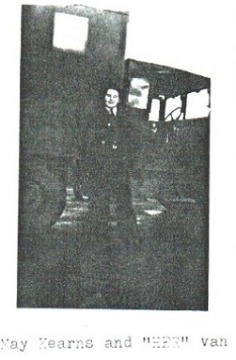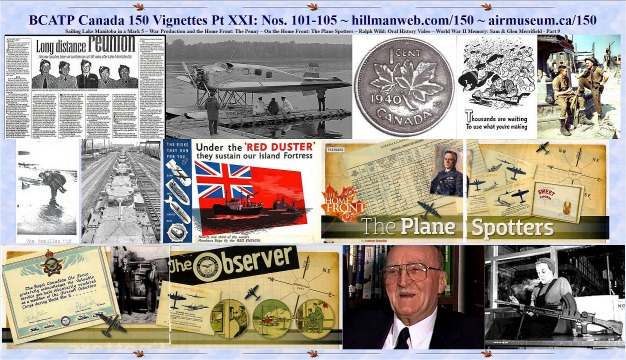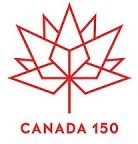101
of 150: Sailing Lake Manitoba in a Mark 5
With signs of war on the horizon
in Great Britain in the 1930s, the country was deeply immersed in preparation
for what was inevitably coming from across the channel in Germany. The
preparation included the creation of a number of organizations designed
to help citizens prepare to repel and defeat the enemy. One such organization
was the Air League of the British Empire, a home for air cadets aspiring
to one day take their place in the skies as pilots in the Royal Air Force.
The writer of this oral history is Maxwell E. Hagman who joined the Air
League at 13 years of age as the first step towards accomplishing his dream.
From here, his career path took him to Britain's ATC
(Air Training Corps), a stint with the Fleet Air Arm and completion of
his RAF basic training, He finally, at age 18 in April 1943, won acceptance
in the RAF to train for flight crew.
Qualifying for training as a navigator, Max found himself
in the middle of North America as he says, at Central Navigation School
in Rivers, Manitoba, where he won his wings. This is his accounting of
a small portion of his story from Rivers outlining the an event that could
have extinguished his dream… and his life.
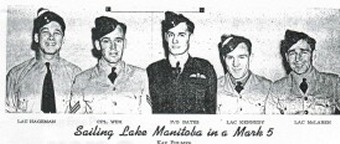
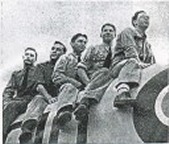
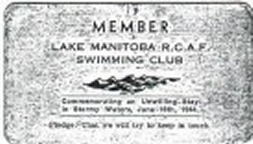 11 The long night of IS/16th June 1944
11 The long night of IS/16th June 1944
I went to the hangar around 2200 hours -- the time scheduled
for the briefing of the night flight to meet the Staff Pilot and the Staff
Wireless Operator -- as well as the two 'Second Navigators' -- the standard
crew of five for a navigational training flight. It was the routine for
trainees to fly with a different crew every time -- one had to study a
large board in the briefing hangar listing the make-up of the crew for
each flight.
P/0 Bill Bates was a young Canadian Pilot -- who I believe
was extremely annoyed that, after his own training and graduation, he had
been posted to be a Station Pilot at No 1 CNS (Central Navigation School
in Rivers Manitoba). He had been hoping for a posting to Europe where he
could fulfill his ambition to fly combat missions against the Axis Forces.
The Staff Wireless Operator was -- as most of those at
Rivers, not 'Aircrew' -- i.e. he did not have the half brevet -- he was
'Ground Staff' -- given extra pay for flying duty. Also a Canadian, his
name was Carl Wek -- and, like Bill, he hailed from the area around the
nearby city of Winnipeg.
The two 'Second Navigators' I soon found out were trainee
'Air Bombers' – newly arrived at Rivers - and this was their very first
night flight. One, Paddy Kennedy was in the RAF -- though he hailed from
the neutral country of Southern Ireland (many folk from S. Ireland served
in the British Forces as volunteers). The other was in the Royal Australian
Air Force (RAAF) -- Jack McClaren -- he was probably the eldest of the
five -- and had remustered from the Australian Army -- and, indeed, he
had been in the siege of Torbruk in North Africa when Rommel's German Anny
had had initial success against the British Army in N. Africa in 1941.
Because it was vital that I have a good flight -- and
got good marks -- I was sad that I had two real 'Rookies' as second Navigators
-- and resolved that I had do my 'Own Thing' -- I could not expect much
help from them on their first night flight!
The briefing was special -- Navigators were warned by
the duty Meteorologist that fierce bad weather was expected to pass across
our flight line before we got back to base. We had to adjust our pre-flight
plans to allow for the stronger winds expected towards the end of the flight.
Rivers, being in the middle of the large land mass of North America, weather
there was easier to forecast accurately than in the unsettled patterns
to be found in the 'Maritime Climate' of the UK -- we hastily re-cast our
flight plans with confidence that what we were now told was certain to
happen.
Meanwhile, Engineering Officers had something special
to say to the Pilots. Now, I, like all my Navigator colleagues, was busily
redrafting our flight plans -- the words for the Pilots were none of our
business -- though I had a clue of what it was all about. I got to hear
that some engine problems were being experienced -- by the newer Canadian-built
Ansons being flown at a slower cruising speed than that designed for them
-- this, so that we Navigators could prepare one flight plan for whatever
aircraft we may be flying in -- in fact, we were due to fly in one of the
new aircraft that night.
We went out to our plane -- and took off for the triangular
trip at around 2300 -- the first leg was about 200 miles to a point east
of Winnipeg, up between Lakes Winnipeg and Manitoba, then west back to
base, returning there around 0200 hours.
At this point, I might mention the strange, typically
British, way of making life as hard as possible for trainees. Unlike modem
passenger aircraft of these days – there was absolutely no sound insulation
-- the unhindered engine noise drowned even thought -- let alone anyone
trying to communicate by word of mouth! The Pilot and Wireless Operator
were in touch by radio intercom -- not so the trainees -- they had to shout
any messages -- or scribble scruffy notes!
As I have said, I did not expect much in the way of valuable
information from the two Second Navigators -- so I did not care too much
if I could not hear anything they may have tried to tell me. The flight
went well for me -- we made our turning points accurately and at the times
I had forecast, nevertheless, I was mindful of the need to ensure that
my log was packed with recorded information. This was necessary because
at de-briefing one would be criticised if there was as much as two minutes
without an entry!
Our turning point to put the aircraft on the last leg
-- that back to base -- was just midway between Lakes Winnipeg and Manitoba,
but I was happy. I looked forward to the flight continuing that way, though
I knew the time was approaching when the heavier wind forces forecast would
begin to affect us.
Lake Manitoba is about 100 miles long and about 25 miles
wide at its widest -- we were crossing at the top end where it is narrower.
At a point roughly halfway across the Lake one of the Bomb Aimers came
up to me and shouted, somewhat agitatedly, 'Pilot wants a new course --
to the nearest airport!'. Thinking that the flight was being foreshortened
due to the adverse effect of the stronger wind, I quickly calculated a
new course straight down the middle of the Lake to Portage le Prairie --
which was on the centre of the coastline at the south end of the Lake.
The Bomb Aimer passed the new course to the Pilot by word of mouth.
Almost immediately THE SECOND ENGINE FAILED! Now one might
ask how it was that I'd not noticed the change in engine note from two
engines to one - the true reason for the need of a new course? My only
defence was that I was so desperately anxious to have a good flight - and
get good marks - that my total concentration meant my ears/brain were not
attuned to pick up such an obvious change! The silence was eerie -- just
wind noise rushing past the aircraft as we lost height in a controlled
descent. I knew exactly where we were and began to think of what lay ahead.
Bill shouted orders for us to bail out. The routine was that Carl, sitting
at the rear of the aircraft would go to the door at the rear and jump first,
then the two Bomb Aimers, then me, fourth in line. Bill would have to hold
the aircraft steady -- and hope he could make it to the rear of the aircraft
and make his exit before the plane got out of control.
13 Panic Stations!
In fact there was no panic as such -- though I guess
all of our hearts were pumping pretty furiously – no one showed any other
reaction than cool determination to do the right thing. Carl opened the
door -- or jettisoned it, I am not sure which -- and then stood there -
unwilling to jump! I found myself yelling 'Push him out' mindful that we
were only at about 5000 feet- quickly reducing to zero! Engineless, the
only way was down -- the thought ran through my mind that a ditching carried
out by a fairly inexperienced Pilot was not something I cared to contemplate!
Ditching a landplane is not something a Pilot can practice -- they are
given advice what to do in such a situation -- but the first time is in
extremis!
Stupid enough to think the only way to survive was to
bail out -- I did not consider parachuting into very stonny, wind-swept
water, miles from any habitation, without any flotation gear, in the total
darkness meant certain death by drowning! Had I been the first one to jump
-- I would have done so! Carl's hesitation saved all of our lives! Bill
opened the bomb doors in the wings and dropped a flare - this showed that
we were now too low for parachuting safely -- so he shouted to us to take
up 'ditching positions'. For Carl and I this meant returning to our seats,
strapping ourselves in, and, leaning forward, heads on our work-tables
-- nestling between our arms. The two others did not have such a good spot
-- but they had to get into a position where they could strap themselves
in -- to reduce injury upon sudden deceleration/impact.
I well remember thinking in those last moments that we
were not going to survive – I was only nineteen -- what a way to go, I
thought -- and not even, heroically, at the hands of an enemy Pilot --
machine guns firing -- from an enemy plane!
In actual fact, Bill made a perfect landing! There was
not the expected jolt – just water rushing in through the open bomb doors
and into the fuselage - we were up to our waists in a trice (in a moment,
very quickly)! Undoing our belts, we made our way to the door at the rear
of the aircraft - in an orderly fashion - no panic at all - I guess we
were all highly relieved that the ditching was so painless after all!
Now, the plane's fuel tanks, at the late stage of the
intended flight, were only about one third full -- and further, the newer
Anson made of plywood, meant that it floated! Most ditched planes sink
-- certainly, one of the older Ansons would not have floated for any time
at all!
There was a ship-like motion as the plane was tossed around
by the strong swell – as we climbed on and sat astride the fuselage - just
ahead of the tail fin - all in a row and wondering what next! Bill and
I went back into the aircraft to look for anything buoyant enough for us
to hold on to if the plane should sink. He thought our parachute packs
would float -- but when we tested one -- it just sank straightaway leaving
a few bubbles! In the middle of the huge land mass of North America our
planes did not have any flotation devices aboard -- no dinghies -- we did
not even have 'Mae Wests' – RAF slang word for bulky life jackets which
all airnen wore on every flight back in Europe. As if our situation was
not bad enough -- the landing lights in the wings, now under the water,
gave off an eerie green light -- and the landing klaxon horns kept moaning
as water short-circuited their electrics -- until the batteries gave out!
14 The Long Wait -- with Diminishing Hope!
Carl told us he had got a 'May Day' radio message out
-- so we thought help would soon be to hand. In total darkness, we could
hear other planes on the same exercise passing overhead. Bill used the
Verey Pistol he had found on our trip back into the aircraft -- sending
up a flare every time a plane passed over -- though there was never any
response. Down to the very last cartridge -- Bill had a quick consultation
with all of us -- should we risk using this last one next time a plane
passed over? We agreed that we should -- and so when another engine note
was heard Bill fired that last round.
[We had found out by this time that there were two of
the five of us who could not swim -- Carl and Paddy. Though being about
8 miles from the nearest shore the ability to swim was unlikely to enable
anyone to reach land -- should our hulk of a plane sink!].
Barely had that last flare ascended -- when there was
a responding one from the plane. Thinking we had been spotted we took comfort,
again, that help would soon ensue. [We did not know that the plane's operator
had sent a radio message -- suggesting we must have landed on an island
-- not believing our plane was floating on the water!]
When daylight came -- a series of Ansons buzzed low over
us -- later on, they started dropping the inflated inner tubes from plane
wheels -- these 'tubes invariably landed a
distance away -- and the high wind meant they sped across
the water even further off! Eventually, one tube landed in a position
which I thought I may be able to swim to and intercept. Never a strong
swimmer -- I figured that I could plug away doing my breast-stroke, and
get the tube. I jumped in -- and immediately got a mouthful of nasty oils
and other fluids from the engines! Anyway, I battled through the awesome
waves -- and got to the inner tube -- which had a thin rope tied in two
places to make a loop. I put my arm through the loop and set off back to
the plane.
A couple of the other chaps were standing on the tailplane
to haul me out of the water, putting my arms up for them to take hold --
I put my arm on the wrong side of the rope loop! The ' tube, thus released,
sped away across the water faster than I could recover it! Now thoroughly
drenched -- in that strong wind I began to suffer in consequence.
Later, one of the Ansons dropped a dinghy -- uninflated
-- but a valuable source of hope. It was then that the Australian, Jack,
dived into the water, began swimming strongly using the crawl -- I wondered
how it was I'd struggled away with my slow, inadequate breast stroke --
yet here was someone who would have done justice in an Olympic heat!
He recovered the dinghy -- and it was up to us to get
it inflated, SAP (soon as possible)! However, we found that the dinghy
was not in the best condition - for years it been held up by instructors
in one of the various flying schools -- used to demonstrate how a turn
of the handle on the C02 bottle would unleash a puff of the gas into it.
Due to thousands of 'puffs' meant that the bottle was now empty! Then we
found a hand pump stowed with the pack -- it was like a small concertina
-- made of rings of rubberised canvas glued together. I said 'My mother
makes these -- doing piece-work at home in UK we'll be OK now'. But the
pump was perished -- one squeeze -- and it burst!
15 Rescue at last!
We had been in this perilous situation for about nine
hours by now - and our hopes were beginning to become a little thin --
no rescue scheme seemed to work! We were taking turns to blow up the dinghy
by mouth -- unsurprisingly, the two non-swimmers were the ones most prominent
in this endeavour! I still have a vivid picture in my mind of Paddy Kennedy's
cheeks puffed out to full stretch -- the look in his eyes told – much better
than any words -- how he regarded this lifeline! However, we had discovered
that the dinghy was only a three-man version and further, it was
perished and leaky, too!
It was then that a different engine note was heard above
-- and out of the grey gloom a twin-engined flying boat appeared -- a Catalina!
Hopes soared -- this really was something which could not possibly fail!
After a couple of circuits around our position – the 'boat' disappeared
back into the grey gloom -- we were utterly devastated!
After a while, yet another different engine note was heard
-- this time it was a very quiet 'put-put-put' -- not at all a powerful
sound -- and then a tiny twin-float, single engined
seaplane appeared -- and landed about 50 yards away from
us! [Later on I was to find that it was a Junkers 34W - an earlier and
smaller relation to the notorious Junkers 52 - the plane Germans used for
dropping paratroops!].
This was the real stuff -- and could not possibly fail!
A man -- an engineer – emerged from the two-man cockpit and climbed down
on to one of the pontoons -- he shouted to us that they could not come
to us -- we had to get to them! Because of the high wind and heavy wave
pattern the seaplane had to stay pointing upwind with its engine running
to avoid capsizing. We understood that -- and prepared to get into our
one dinghy – five men into a dinghy meant for three, not fully inflated
-- and leaking.
There were a couple of hand-paddles in the pack -- these
were used -- together with another four pairs of plain, cupped hands --
we all paddled furiously to the seaplane --
I am willing to bet should there ever have been an odd
Olympic category for that sort of craft -- we could have won easily --
in that desperate mode!
Aboard the seaplane -- we were all cramped into a metal-lined,
box-like cargo hold just behind the cockpit -- a barren, hard place --
but we were overjoyed to be on our way to safety. It was then that the
Pilot turned around and told us, that, in landing, that some of the struts
holding the two floats had buckled -- and now overloaded, the seaplane
could not take-off anyway! It was necessary to taxi to landfall -- but
the craft had to stay pointing upwind - and land in that direction was
25 miles away! It was slow and very, very bumpy -- it took two and half
hours and two or three of us were very seasick!
We were very weary when land was eventually reached --
but being an extremely rocky area -- it was necessary for us to jump into
the water up to our waists -- to make our way the last 30 yards or so to
dry land. The seaplane could not come closer lest more damage was done
to the floats. It was then that we noticed a man tying up his outboard-engined
boat nearby. To our surprise we were met by a RCAF Officer -- sporting
both a Pilot's brevet – and medical insignia on his unifonn -- a Pilot
and a Doctor.
16 Dry Land, Alcohol - and Pairs of Pink Socks!
The medico-cum-pilot led us to a group of log-cabins
-- he took us inside one of them. The family there -- I barely noticed
-- possibly ethnic Canadians -- Indians? I did not find out -- certainly
subsistence farmers, not particularly well-off -- judging by a quick glance
around their home -- though I was startled to see a spankingly modern Aga-type
stove -- gleaming white in the dark interior!
The doctor gave us a quick once-over -- tired and weary
though we were -- none of us had suffered any physical injury. Pulling
out a flask from his jacket -- he offered us all
a swig of brandy! Both Bill and Carl declined -- they
were dutifully teetotal -- so was I -- liquor had never passed my lips
before -- but I took my very first swig of alcohol as did both Jack and
Paddy!
The Doctor disappeared -- to one of the log-cabins which
was the local store – to reappear, a little later, with five pairs of pink
woollen socks - we had, of course, long since abandoned our footwear! Then
an RCAF open truck came pounding along the dirt track -- two RCAF men dismounted
-- and said they were to drive us back to their base -- Portage la Prairie
-- the airport we'd been making for some twelve hours previously! Taking
our leave of the Flying Doctor -- his Tiger Moth had landed on the dirt
track not far away -- and the occupants of the log cabin -- we got into
the open truck -- to see an outboard motored dinghy! Apparently the two
RCAF men were Air Traffic Controllers, on duty at Portage -- and they felt
it was their duty to come out and try to find us on that dark and stormy
night. We had, in fact spotted some flares during the night some way south
of our position.
It was a long and bumpy ride along dirt tracks -- I think
it took about two and half hours to get to the airport -- and its well-appointed
RCAF hospital. It was then the true, kind nature of Bill Bates was demonstrated
-- the only one of us who was a Commissioned Officer -- he declined the
separate, higher quality accommodation to which he was entitled -- 'I have
shared the trials and tribulations of my comrades here for many hours --
we are not going to be separated now!' So it was that, after a warm shower
we were all ushered into lovely warm and comfortable beds in one large
ward!
We slept around the clock -- a good 24 hours -- hardly
surprising after our denial of comfort and sleep during that long wet ordeal.
It was difficult to estimate the times – but I suppose it was around ten
hours on that sinking plane, two and a half on the long trip - taxiing
to the shore, an hour in the log-cabin and another two and a half on that
bumpy ride in the truck.
Upon awakening, a nurse came into the ward -- she held
up two small plastic radios, one on each hand -- one pink and one yellow
-- 'Which one would you like, boys' she asked -- as if it mattered after
all we'd experienced! We chose·one -- and, switched on -- it was
in the middle of a news broadcast. The first item was in a the mode those
of us from the UK were not familiar (we were more used to the measured
tones of BBC's Stuart Hibberd) was 'Flash - five airmen were plucked from
Lake Manitoba today' etc., etc. then, a little later -- 'Flash -- the fifth
wartime Derby was held at Newmarket, England, today -- it was won by a
horse called Ocean Swell' -- we rocked with laughter at that strange coincidence.
17 Back to Rivers -- and the end of the Course
We thanked and bade farewell to the hospital staff at
Portage -- and we were flown back to Rivers in an Anson. It was a Saturday
afternoon -- and no classes. A quick explanation of those hectic days to
the one or two of my colleagues who were around -- and it was necessary
for me to go to the Instrument Section as my special RCAF issue Navigation
watch had filled with water and had stopped.
I knocked on the door of the Section -- in which there
was a small sliding hatch. One of the Instrument guys lifted the flap --
and I said 'May I have a new watch -- I was in the Lake' -- with what I
thought was a suitably modest smile. 'If you're stupid enough to go swimming
with your watch on -- it's up to you to get it fixed!' was the cross response!
And the hatch was slammed down. I had to knock again and make it clear
the reason I was in the Lake -- so then I became a hero for a few moments
whilst I recounted some of the events of the ditching. I got a replacement
watch.
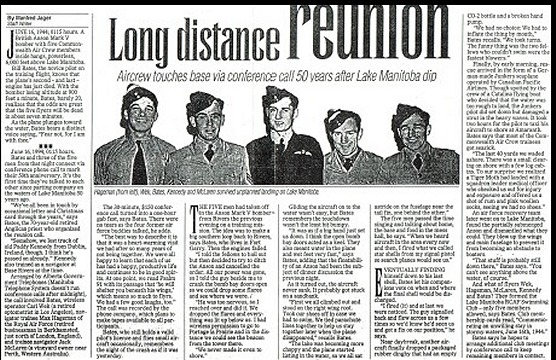
Winnipeg Free Press article reporting Max Hageman's crew's
50th Anniversary reunion in Manitoba and recounting the events that
night.
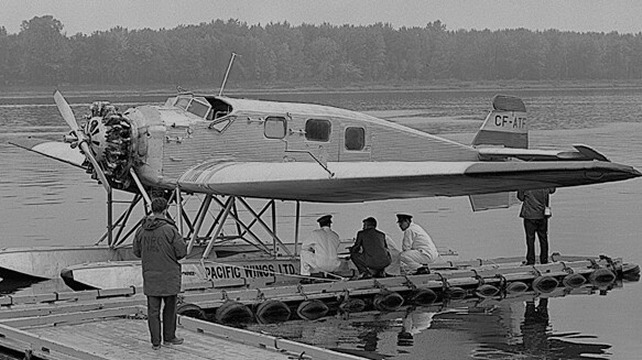
This Junkers, now in the collection of the Canadian Aviation and
Space Museum,
was located in Lac Du Bonnet, Manitoba during World War II.
It is possible that this is the aircraft that rescued Max’s crew.
https://ingeniumcanada.org/aviation/collection-research/artifact-junkers-w-34f-fi.php
102
of 150: War Production and the Home Front: The Penny
One Penny… Many Thoughts!
The Life and Times of a World War II Artifact
 We deal
with two commodities at the Commonwealth Air Training Plan Museum - history
and artifacts. Although each is not dependent on the other for the purpose
of creating a human thought or feeling, the two combined make for a much
more meaningful human experience. An artifact gives tangible, sensory stimulation
while adding understanding to the history related to that object while
history provides purpose and meaning to the artifact. Without each other,
history is an abstract concept... and the artifact is an old object with
no meaning. We wouldn't be much of a museum if the effort to combine these
commodities wasn't our primary goal -- we must strive to make displays
where artifacts and history merge.
We deal
with two commodities at the Commonwealth Air Training Plan Museum - history
and artifacts. Although each is not dependent on the other for the purpose
of creating a human thought or feeling, the two combined make for a much
more meaningful human experience. An artifact gives tangible, sensory stimulation
while adding understanding to the history related to that object while
history provides purpose and meaning to the artifact. Without each other,
history is an abstract concept... and the artifact is an old object with
no meaning. We wouldn't be much of a museum if the effort to combine these
commodities wasn't our primary goal -- we must strive to make displays
where artifacts and history merge.
Our artifacts are specifically related to the history
of Canada in the Second World War. When they were new, they were available
in quantities of hundreds (hangars), thousands (aircraft) and in some cases,
millions (buttons and bullets). Sixty years hence, most have been lost
to the scrapper, 'the collector', the attic or they have just disappeared.
Yet, as scarce as World War II artifacts may seem to be,
they still can be found all around us, as was discovered on a recent trip
to the grocery. Together with the essential food items which left the store
was a 1940 Canadian penny in the change (this was 2006). It was dark brown
and dirty from thousands of financial transactions over its 67 year life
but in fine shape nevertheless and not yet ready to retire.
One has to wonder how many people it has touched. If it
has been given as payment or change in one financial transaction for every
day of its life, it will have been in contact with almost 25,000 people
by now. It is impossible to accurately make this calculation as the penny
may have averaged more than one transaction a day or sat in somebody's
jam jar for 40 years until returned to public circulation. However, one
has to wonder… was it in William Lyon Mackenzie King's pocket when peace
was declared in September 1945? ... or was it in Ann Murray's purse that
1971 night when this singer received her first Juno award? ... or was it
in Wayne Gretzky's locker on October 15, 1989, the night he broke Gordie
Howe's NHL
point record? Although it is not possible to verify these
possibilities, our penny has undoubtedly been in existence for a large
amount of Canada's historical events and touched many people – maybe some
significant and famous. Our little 1940 penny is an artifact without a
known history.
This Canadian artifact is from one of the country's most
traumatic and triumphant eras and holds great meaning for those who know,
or want to learn, the history of World War II. It provides tangible, sensory
stimulation through sight and touch. It emits a power to evoke the history
of World War II and all time thereafter. With literary license, we bring
you parts of the history of Canada in World War II not normally seen in
this publication. It is a story of the fictionalized experiences of our
tiny copper artifact and some ordinary people it may have met along the
way. It is the story of the citizens of Canada between 1939 and 1945 and
their great sacrifices for war service and impressive contributions of
labour, materials and manufactured goods.
Our artifact was one of 85,740,532 Canadian pennies
minted in Ottawa in 1940 - the obverse side of the coin depicts King George
VI, reigning monarch of the British Commonwealth at the time. The reverse
side shows our beloved maple leaf and date of issue.
After being carefully fabricated in a mechanical press
at the Canadian Mint in Ottawa, our penny was shipped to the Royal Bank
branch located in Fort William, Ontario... here it, and 49 identical uncirculated
brethren, were separated from their paper roll swaddling and mixed in with
the six other pennies in the teller's cash drawer.
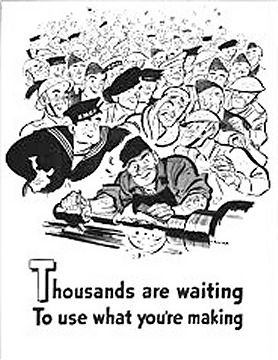 It
is introduced to the world outside of high finance on July 22, 1940 as
a small, but important portion of the cash given to Mary Hutton in exchange
for her pay cheque from the Canada Car and Foundry company. Her job is
applying dope to the fabric skins of Hurricane aircraft produced by that
company. Mary is the mother of two children and wife to a husband in the
army training for battle at a camp somewhere in the Canadian west.
It
is introduced to the world outside of high finance on July 22, 1940 as
a small, but important portion of the cash given to Mary Hutton in exchange
for her pay cheque from the Canada Car and Foundry company. Her job is
applying dope to the fabric skins of Hurricane aircraft produced by that
company. Mary is the mother of two children and wife to a husband in the
army training for battle at a camp somewhere in the Canadian west.
Of the 11,300,000 people living in Canada during World
War II, Mary was one of 1,049,876 workers involved in essential war industries.
Another 2,100,000 were employed in "essential civilian employment" which
included agriculture, communications and food processing. Aircraft workers
such as Mary produced over 16,000 aircraft in Canada during the course
of World War II. Of these, 10,000 were shipped directly to Britain while
the remainder went to the British Commonwealth Air Training Plan, local
air defence and the United States. Remarkably, manufacturing capacity in
Canada vaulted from 5,000,000 square feet in 1939 to 14,000,000 square
feet by war's end.
Some aircraft were built by a single company while others
were assembled by groups of companies as was the case for the venerable
Mosquito aircraft. It was built in pieces by General Motors (fuselages),
Massey Ferguson (wings), Boeing (tailplanes), the Canadian Power Boat Company
(flaps) and Otaco (undercarriages) together with numerous smaller companies.
De Havilland undertook final assembly completing 1,100 by war's end. Canada's
aircraft industry peaked with 120,000 employees producing 4,000 aircraft
a year during World War II.
The story was the same for other wartime needs as well.
Canada's workers produced 800,000 military transport vehicles. They made
50,000 tanks, 40,000 field and naval anti-aircraft guns and 1,700,000 small
arms. The list of companies converting production from peacetime products
to those of war include Bombardier and General Motors (450 military snowmobiles),
Canadian Pacific Railway (788 Valentine tanks with General Motors engines),
CPR's Angus Shops and Canadian National's Montreal Locomotive Works (5,200
tanks) with the latter also producing 2,150 Twenty-Five pounder Sexton
self-propelled guns. Canada's shipyard workers produced 348 10,000 ton
merchant ships while cutting production time per ship from of 307 to 163
days.
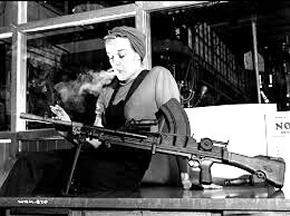 Mary
and her million co-workers produced $10 billion (World War II dollars)
worth of war goods. The wizard-boss behind this phenomenal production was
Canada Department of Munitions and Supply Minister C. D. Howe who worked
his production magic with the 28 crown corporations within his department.
Howe's "Bits and Pieces" program assisted existing manufacturers in the
conversion of their factories to the production of military goods -- the
Canadian Cycle and Motor Co. Ltd. (CCM) converted from producing bicycles
and skates to parts for anti-tank and Bren guns while the Liquid Carbonic
Corporation converted from producing soda fountains to tank parts.
Mary
and her million co-workers produced $10 billion (World War II dollars)
worth of war goods. The wizard-boss behind this phenomenal production was
Canada Department of Munitions and Supply Minister C. D. Howe who worked
his production magic with the 28 crown corporations within his department.
Howe's "Bits and Pieces" program assisted existing manufacturers in the
conversion of their factories to the production of military goods -- the
Canadian Cycle and Motor Co. Ltd. (CCM) converted from producing bicycles
and skates to parts for anti-tank and Bren guns while the Liquid Carbonic
Corporation converted from producing soda fountains to tank parts.
Howe's department came up with innovative measures to
make labour available when and where it was needed. His Wartime Housing
Ltd. produced two-bedroom houses for $1,982 and four-bedroom houses for
$2,680. Agreements were established between Canada and the provinces for
the first time to provide day-care funds for working mothers. As a result
of the war production, Canada became the third largest trading nation in
the world.
On the day Mary received our penny in her change, the
British Commonwealth Air Training Plan commenced operations at No. 1 Service
Flying Training School at Camp Borden, Ontario. In England, 80 of 81 aircraft
returned to base from seven operations in Europe including the largest
night effort launched by the RAF since the fall of France. Twelve Blenheims
attacked airfields in France, six Battles bombed barges in Dutch ports,
eight Hamptons spent the night laying mines.
Five groups of aircraft were involved with OTU (Operational
Training Unit) sorties. Amazingly, only one Whitley was lost (1).
In the air war over Europe, total United Kingdom losses
of aircraft during the war were 22,010 - 10,045 fighters and 11,965 bombers.
Mary used our penny with her purchase of a basket of groceries.
Unlike our 2006 transaction with Safeway, Mary was required to provide
ration stamps for her purchases. Foodstuffs and other commodities rationed
by the Canadian Government during the war included alcohol, gasoline and
rubber starting in 1942. Eventually the list was expanded to include coffee,
tea, sugar, meat and butter. Eleven million ration books were distributed
to Canadians who all learned how to "make more with less."
Newly minted pennies are almost 98% pure copper today
(2006) while WWII pennies were 94% steel, 1.5% nickel steel with 4.5% copper
found mostly on its plated coating.
Our penny next turns up in the pocket of Sergeant Fred
Bailey, a drill instructor at Camp Borden, Ontario on October 31, 1940.
He was one of over 200,000 soldiers who passed through this army training
centre during World War II.
Camp Borden was also the site of Canada's first operating
Service Flying Training School which graduated 2,728 pilots. Enlistment
in the Royal Canadian Air Force exceeded 250,000 during World War II of
which 18,000 died in the line of duty.
When Canada declared war on Germany in September 1939,
we had 4,500 regular soldiers and 51 ,000 reservists in the army. By war's
end, 731,000 Canadians had served in the army of which approximately 23,000
were killed. Of 150,000 troops involved with the D-Day invasion of Europe,
14,000 were Canadian soldiers.
October 31, 1940 is generally accepted as the day that
the Battle of Britain ended. In defence of Germany's direct attack against
the Royal Air Force on British ground, the RAF lost 792 aircraft to the
Luftwaffe's 1,389. Two-thousand, three-hundred and fifty-three men from
Great Britain and 574 from overseas served as RAF air crew between July
10 and October 31, 1940 in the Battle of Britain - of the total 2,927 airmen
involved, 544 (18%) were killed during the Battle of Britain while a further
791 (27%) lost their lives in air combat in other actions by the end of
the war.
Sgt. Bailey bought a package of Player's Navy Cut cigarettes
with the change in his pocket which included our penny.
The term 'cent' comes from the French word for 'hundred.'
The term penny comes from British coinage which utilized the terms 'pounds'
and 'pence.'
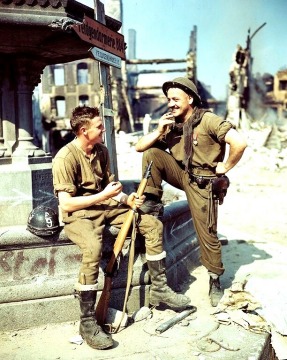 .
.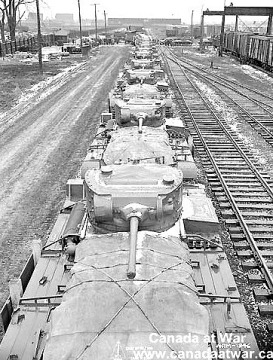 Our penny next shows up in Halifax, Nova Scotia on April
4, 1942 in the pocket of Robert "Bobby" Fletcher, single and one of 14,000
to serve in Canada's Merchant Marine navy. Canada's merchant seaman received
training at four manning pools established in 1941 and 1942. From 1,400
merchant seaman in 37 ships, Canada's merchant navy grew to 14,000 seamen
by war's end with 180 ocean-going cargo vessels - the largest merchant
navy in the British Commonwealth. One-thousand, one-hundred and forty-six
died of which 1,059 are remembered on the Halifax memorial which is dedicated
to those whose place of burial is unknown.
Our penny next shows up in Halifax, Nova Scotia on April
4, 1942 in the pocket of Robert "Bobby" Fletcher, single and one of 14,000
to serve in Canada's Merchant Marine navy. Canada's merchant seaman received
training at four manning pools established in 1941 and 1942. From 1,400
merchant seaman in 37 ships, Canada's merchant navy grew to 14,000 seamen
by war's end with 180 ocean-going cargo vessels - the largest merchant
navy in the British Commonwealth. One-thousand, one-hundred and forty-six
died of which 1,059 are remembered on the Halifax memorial which is dedicated
to those whose place of burial is unknown.
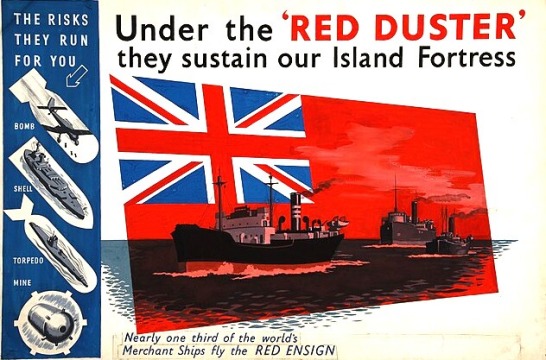
Of the 106,000 sailors to serve in the Royal Canadian Navy
during World War II, 6,500 were women. When Canada declared war, the navy
had six destroyers. By war's end, the RCN had 471 warships and smaller
fighting vessels and was the world's third largest navy. The RCN sank 28
enemy submarines and numerous surface vessels while losing 24 of its own
warships. Close to 2000 Canadian sailors died during hostilities. Canada
contributed 110 warships and 10,000 sailors to the D-Day invasion.
On April 4, 1942, an RCAF aircraft spotted the Japanese
fleet en-route to Ceylon. Prior to the Japanese invasion, the air crew
was able to give warning in time for a successful defence of the island.
Winston Churchill cited this episode as "the most dangerous moment of the
war."
In Europe a total of 208 aircraft were involved in a raid
against Dortmund Germany. This force, which was greater than any
previously sent to this city, included 142 Wellingtons, 34 Hamptons, 20
Stirlings, eight Halifaxes and four Manchesters of which five Wellingtons
and four Hamptons were lost. The bombs fell across a 40 mile stretch of
the Ruhr Valley. The reports included one unspecified industrial building
destroyed, one military establishment severely damaged, four dwelling-houses
destroyed and 31 damaged with four people killed and 27 injured. It is
possible that other Ruhr cities and towns were hit but no details are available.
Also that night, minor operations included 23 aircraft to Le Havre (one
Wellington lost), five Blenheim Intruders to Soesterberg Airfield, one
Stirling minelaying near Heligoland. Of the 237 sorties that night, 10
aircraft (4.8%) were lost. (1)
Bobby used the penny in payment for a $10 war savings
coupon.
According to numismatic experts, our penny has a value
today of 75 cents to a collector willing to part with the cash.
By the end of World War II, over 1 ,000,000 Canadians
served in the country's armed forces. They brought home 48,000 war brides
and 22,000 children. Of the 1,000,000 serving, 50,000 were women. Of the
1,000,000 serving, 45,363 died in action, 53,174 were wounded and 9,334
were held as prisoners-of-war. Canadian service men received 16 Victoria
Crosses during combat of which two were given to men enlisted in the RCAF
- David Hornell and Andrew Mynarski. Of the 19,000 who served in the armed
forces for Newfoundland, 700 were killed in World War II.
A great number of Canadian civilians contributed to the
Allied war effort in a paramilitary manner. Serving in No. 45 Wing and
No. 45 Group of the RAF Transport Command and the Atlantic Ferrying Organization
an unknown number of Canadian men and women flew aircraft from North America
to Britain to be used for the war effort. Standard wage for this activity
was between $500 and $1,000 per trip with the pilot being required to find
his/her way home. The casualty rate for this activity was 20%.
Other Canadian civilian activities aiding the war effort
in Britain were firefighting (422 men with 11 casualties), canteen and
reading room volunteers (585 with 71 casualties), Red Cross and St. John
Ambulance assistants and ambulance drivers, and Newfoundland Foresters
who served in the British Home Guard.
All facts and statistics were gleaned from various internet
web sites and a book.
We wish to offer special gratitude to one, incredibly
interesting site -
The Veterans Affairs Canada web site (www.vac-acc.gc.ca)
from which a huge amount of the information in this article
was acquired
Also to be thanked are the following organizations and
book from which information for this article was obtained.
www.civilization.ca
- The Canadian War Museum
www.pcfleet.com
- Canadian Coin Club
www.rootsweb.coml-camillww2/homelration.htm
Canadian Military Heritage Project
http://en.wikipedia.org-
Wikipedia
www.legion.ca - Royal
Canadian Legion
(1) --The Bomber Command War Diaries,
Martin Middlebrook & Chris Everitt, 1996.
103
of 150: On the Home Front – The Plane Spotters
The following is an article written by Graham
Chandler
and published in the Man/June 2013 edition of the
Legion Magazine.
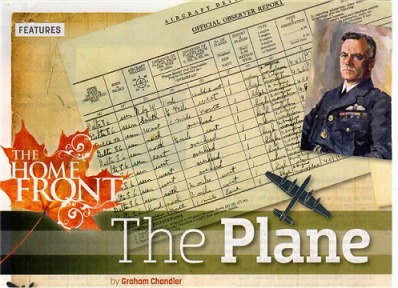
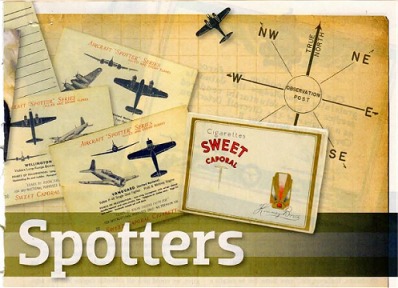
Official observer reports kept by Doug Betts, a.k.a. Delta 86; Air
Vice-Marshal George Croil;
aircraft spotter cards contained in Sweet Caporal cigarette packages.
"I hereby declare my willingness to act without renumeration
as an Official Observer in the Aircraft Detection Corps of the Royal Canadian
Air Force."
Thus began the agreement for civilian volunteers who wanted
to do their part by becoming the eyes and ears of Canada's home front during
the Second World War. Among those signing the call were lighthouse
keepers, housewives, hjgb school students, fishermen and Hudson's Bay Company
fur traders.
Doug Betts was just 13 years old and in school at Wentworth,
N.S., when he heard about the Aircraft Detection Corps (ADC) from a friend
who had been appointed Chief Observer for his area. "He called me up and
said, 'Guess what, we are organizing a post in our area here? Will you
be an observer?' Of course I was ecstatic," recalls the wartime observer,
now 84. "We were as keen as mustard to do anything like that." Typical
of this patriotic enthusiasm, by war's end, 30,000 had been recruited as
unpaid observers to scan Canada's skies, ground and seas and report aircraft,
ships, submarines and suspicious activity anywhere.
They also reported and assisted Allied ships and aircraft
in distress. Many even rescued downed aircrew. Some were supplied with
radio equipment but most called in sightings via normal telephone lines
on which they were given priority routing. All were civilian, however,
the corps was administered by the RCAF who pulled together observations
to compose live grid maps of activity and potential threats for both coasts
and in between.
Under ADC's motto Watch And Warn, these
unsung heroes played a critical role in Canada's wartime defences. Few
Canadians are aware how close German and Japanese forces came to Canada
during that war: U-boats just 15 miles off Halifax; a German submarine
landed on Sable Island; 23 ships sunk in the Gulf of St Lawrence; Estevan
Point on Vancouver Island shelled by a Japanese submarine; a German spy
put ashore along the Gaspe.
"We didn’t realize how important our job was," says Fern
Falardeau, who as an AC2 (Aircraftman Second Class) worked in a "filter
centre" in 1943 taking calls from observers and passing the information
to operations staff at RCAF Station Chatham, N.B., for analysis.
The idea for the corps was hatched under Air Commodore
George Croil in late 1938 as war loomed and Canada's coasts would be vulnerable.
In October that year, after a committee meeting on the proposed scheme,
he requested Air Officers Commanding east and west coasts to form Air Detection
Corps in their areas. A year later, Croil was Air Vice-Marshal and worked
with the two commands in organizing publicity, recruiting, training and
communication networks.
The formidable task of volunteer recruiting got underway
in May 1940. "Of Canada's 3·9 million square miles, an astonishing
528,000 were organized by ADC to be monitored," wrote Allan Coggon in his
2004 book, Watch And Warn: A Wartime Story Of Canada's Homefront Aircraft
Detection Corps. "Divided into 91 sectors, they were subdivided into
Chief Observer areas of 48 square miles." Each sector was further divided
into number-coded observer post names approved by the Chief Observer.
Advance advertising was through posters, local newspaper
stories and letters to prominent community members such as postmasters,
clergy, police chiefs and school principals -- many of whom became regional
directors. These were followed up by visits to communities by ADC officers
to interview and sign up potential observers and chief observers.
At first there was no handbook; instead a series of notices
were provided. Observers were, for example, to "report all aircraft seen
contrary. Local flying within 15 miles of an airport or seaplane base positively
identified as friendly need not be reported. "Other instructions included
"planes that are lost or in trouble while still in the air" as shown by
"rockets being fired or flares dropped; engine misfiring or not sounding
right.'' With regard to marine vessels, "all submarines, strange trawlers,
coasters and other suspicious marine craft," with the proviso "never mention
the name of Allied ships in reports."
Furthermore, "strangers that you think may be about to
do damage to planes, boats, barracks, railways, power plants, telephone
or telegraph lines, wireless stations, water supplies, factories" are to
be reported, as well as "strange signaling or flashing lights, things thrown
from vessels, caches of supplies, unusual camping grounds."
Observers were to get to a telephone or telegraph fast.
"Tell the operator you have a report for the Aircraft Detection Corps.
The operator will know how to and where to send your report," the notices
went.
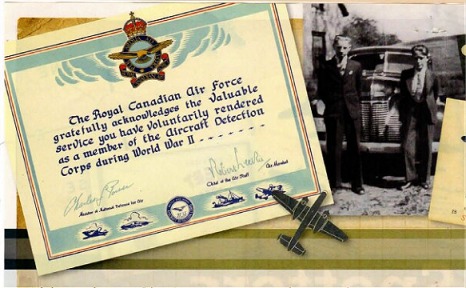
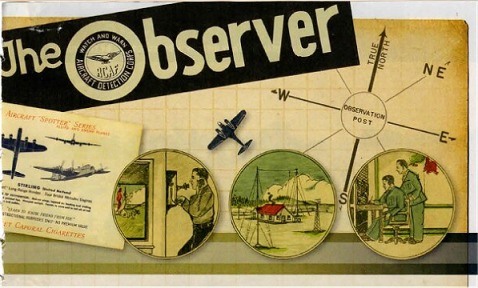
A Certificate of Appreciation from the RCAF; Doug Betts (right)
and a friend in 1943; The Observer newsletter;
llustrations show an ADC observer phoning in a report, the message
going by telegraph and being received at a filter centre.
An aircraft direction finder and some instruction on aircraft
and vessel recognition were provided. "They sent us out a little package
of profiles -- three views of Blenheims, Hudsons, etc.," says Betts. But
he recalls a better guide: "Where most of us got our aircraft identification
statistics was from Sweet Caporal cigarette packages," he says. "During
the war on the back of the Sweet Caps they would have an aircraft, like
a Hurricane or a Spitfire or a Mustang with their general characteristics
and a small review. Occasional further assistance was given in the ADC's
journal, The Observer, published monthly by Air Force Headquarters.
Betts remembers having regular assigned shifts each day,
which bad a bonus. "I was going to school at the time and this was my greatest
forte because the Chief Observer went to the teacher and said ' it would
be nice if you wouldn't keep Doug in after school because he has to spot
between three and five [o'clock].'
So I was king of the hill. My call sign was Delta 86 and
my direct connection was I called the operator at Wallace N.S. and just
said, 'This is Delta 86 and I wish to report an aircraft movement,' and
it was all on her switchboard where she was supposed to route the call."
He says on a typical shift he would report up to 15 airplanes, which he
would summarize on official forms at shift's end.
Where the telephone was on a rural party line, reports
took immediate priority. Coggon wrote that in some country areas without
phones, "Children at home and also those in school were runners for their
observer parents, rushing their written sighting report to the filter centre
on foot or by bicycle to the nearest telephone."
Numerous incidents involving Japanese ships and aircraft
beginning in 1942 resulted in stepped-up observer posts: 192 fishing vessels
were in use as observers that year -- together with former fishermen, they
became known as the Fishermen's Reserve of the Royal Canadian Navy. Other
B.C. co-operation came from the Pacific Coast Militia Rangers, made up
of loggers, miners and woodsmen who knew the coastal rain forests well
and were sometimes described as a "guerilla group." They were especially
important before radar installations in 1943. Similarly, lighthouse keepers
and their families played their expert role in reporting; although some
had no telephones, so reports were mailed to the filter centres -- anything
more urgent demanded sending a boat with the observer's report.
Some upgrading was prioritized by the government: in 1943,
$1 million was spent for new radiotelephones and telephone lines on both
coasts. In the north, the Hudson's Bay Company's 101 fur trading posts
were already connected by a vast radio network, and Coggon reported that
by fall 1940 with the support of the RCAF they had all been updated and
properly organized into an efficient Aircraft Detection Corps that
could report on airplanes and ships in the Far North. Most also became
crucial weather reporting stations.
Observers were kept busy. According to Coggon's book,
reports for the year 1943 totalled 223,336 of which 221,359 were aircraft
movements and 142 were submarines. German submarine crews had intensified
their offensive early in 1942 when the area west of Newfoundland, south
of Labrador and north of Nova Scotia became popular U-boat hunting grounds.
Convoys were routinely attacked and dozens of Allied ships torpedoed.
Falardeau reckons the ADC was a critical part of Canada's
wartime defence. "All of it -- the east coast, the west coast, Sault Ste.
Marie (important for protection of the locks on the Great Lakes) and the
Hudson Bay portion," he says. "At one time there were rumours that the
Germans had landed in the Arctic and were assembling a bomber up there.
And they had weather stations there, too."
Late in 1944 as the Allies gained the upper hand in Europe,
the bomber threat to Canada was considerably less and it was decided to
disband the ADC that November. Individual letters of thanks on RCAF letterhead
were sent out in December.
The ADC had its postwar legacy: the corps' organizational
experiences were used as the basis for Canada's Ground Observer Corps to
watch Cold War skies before Distant Early Warning Line and Pinetree Line
radars were operational.
For Betts, it was full circle: joining the RCAF in 1949,
he served on the Pinetree Line in heavy radar.





 We deal
with two commodities at the Commonwealth Air Training Plan Museum - history
and artifacts. Although each is not dependent on the other for the purpose
of creating a human thought or feeling, the two combined make for a much
more meaningful human experience. An artifact gives tangible, sensory stimulation
while adding understanding to the history related to that object while
history provides purpose and meaning to the artifact. Without each other,
history is an abstract concept... and the artifact is an old object with
no meaning. We wouldn't be much of a museum if the effort to combine these
commodities wasn't our primary goal -- we must strive to make displays
where artifacts and history merge.
We deal
with two commodities at the Commonwealth Air Training Plan Museum - history
and artifacts. Although each is not dependent on the other for the purpose
of creating a human thought or feeling, the two combined make for a much
more meaningful human experience. An artifact gives tangible, sensory stimulation
while adding understanding to the history related to that object while
history provides purpose and meaning to the artifact. Without each other,
history is an abstract concept... and the artifact is an old object with
no meaning. We wouldn't be much of a museum if the effort to combine these
commodities wasn't our primary goal -- we must strive to make displays
where artifacts and history merge.
 It
is introduced to the world outside of high finance on July 22, 1940 as
a small, but important portion of the cash given to Mary Hutton in exchange
for her pay cheque from the Canada Car and Foundry company. Her job is
applying dope to the fabric skins of Hurricane aircraft produced by that
company. Mary is the mother of two children and wife to a husband in the
army training for battle at a camp somewhere in the Canadian west.
It
is introduced to the world outside of high finance on July 22, 1940 as
a small, but important portion of the cash given to Mary Hutton in exchange
for her pay cheque from the Canada Car and Foundry company. Her job is
applying dope to the fabric skins of Hurricane aircraft produced by that
company. Mary is the mother of two children and wife to a husband in the
army training for battle at a camp somewhere in the Canadian west.
 Mary
and her million co-workers produced $10 billion (World War II dollars)
worth of war goods. The wizard-boss behind this phenomenal production was
Canada Department of Munitions and Supply Minister C. D. Howe who worked
his production magic with the 28 crown corporations within his department.
Howe's "Bits and Pieces" program assisted existing manufacturers in the
conversion of their factories to the production of military goods -- the
Canadian Cycle and Motor Co. Ltd. (CCM) converted from producing bicycles
and skates to parts for anti-tank and Bren guns while the Liquid Carbonic
Corporation converted from producing soda fountains to tank parts.
Mary
and her million co-workers produced $10 billion (World War II dollars)
worth of war goods. The wizard-boss behind this phenomenal production was
Canada Department of Munitions and Supply Minister C. D. Howe who worked
his production magic with the 28 crown corporations within his department.
Howe's "Bits and Pieces" program assisted existing manufacturers in the
conversion of their factories to the production of military goods -- the
Canadian Cycle and Motor Co. Ltd. (CCM) converted from producing bicycles
and skates to parts for anti-tank and Bren guns while the Liquid Carbonic
Corporation converted from producing soda fountains to tank parts.
 .
.





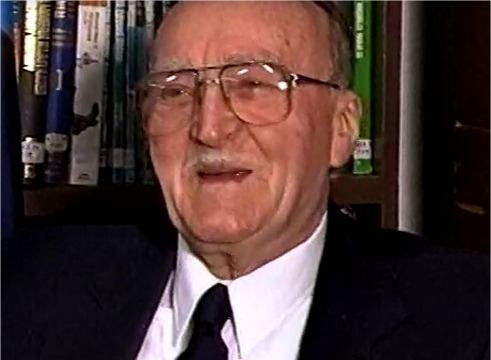
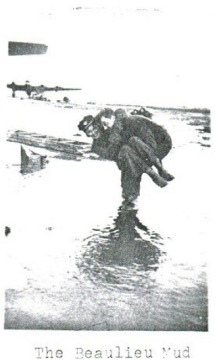 .
.